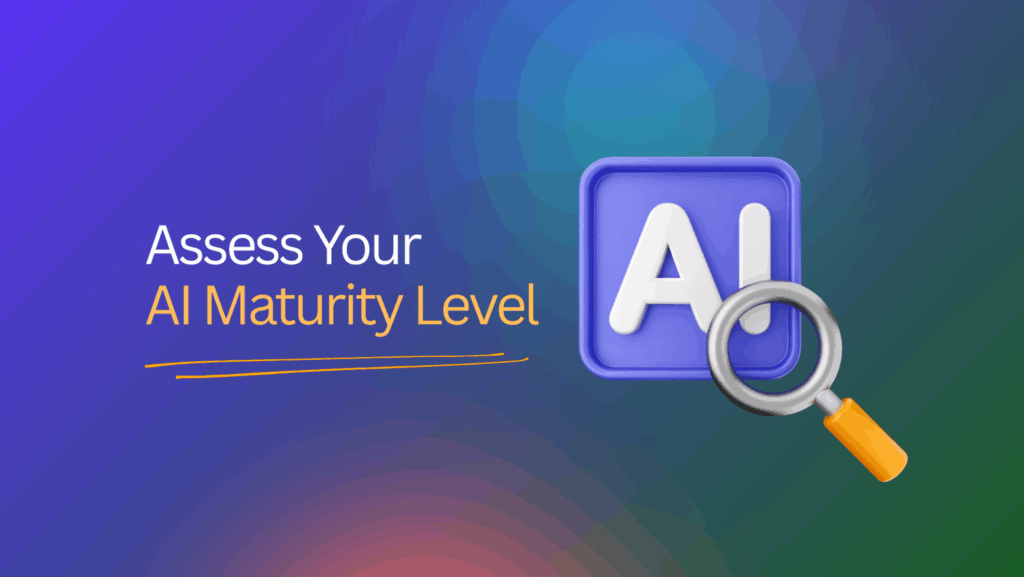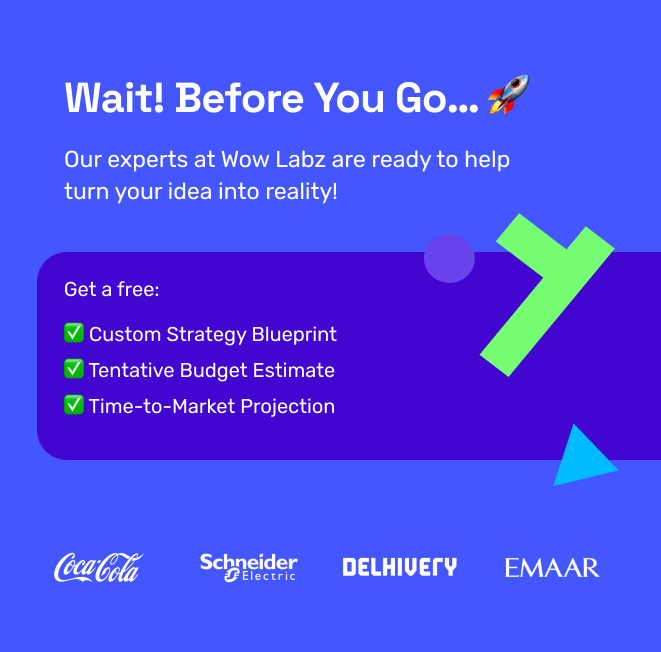AI maturity goes far beyond the deployment of advanced technologies.
It is a measure of how well artificial intelligence is embedded across an organisation’s culture, operations, and strategic vision.
In other words, success is not defined simply by the tools at hand, but by how effectively they are applied.
Think of it this way: a highly skilled chef can have access to the finest ingredients and state-of-the-art kitchen equipment, yet still struggle to create a great dish in a poorly organised kitchen.
Similarly, without the right foundations, processes, and mindset, even the most sophisticated AI tools will fail to deliver meaningful results.
The maturity of AI within an organisation is shaped by several key aspects:
- People – the level of AI literacy across teams and leadership’s commitment to its adoption.
- Processes – how seamlessly AI is integrated into everyday workflows.
- Data – the quality, accessibility, and governance of data as the foundation for AI.
- Technology – the robustness and scalability of platforms, systems, and infrastructure.
- Governance – policies and ethical practices ensuring transparency, accountability, and fairness.
Understanding these dimensions provides a holistic picture of how prepared an organisation is to extract real value from AI.
It also sets the stage for identifying where they currently stand along the AI maturity journey.
Next, let us explore the core pillars of AI maturity in more detail, which serve as the foundation for assessing readiness.
Key Pillars of AI Maturity
Reaching higher levels of AI maturity requires strength across several interconnected pillars.
Each plays a critical role in ensuring that AI initiatives move beyond isolated experiments to create lasting organisational impact.
- Data Preparedness – High-quality, reliable, and well-governed data is the essential foundation on which every AI initiative is built. Without it, even the most advanced models cannot deliver meaningful insights.
- Technology and Infrastructure – Scalable systems, platforms, and deployment pipelines provide the technical backbone that supports experimentation, growth, and long-term adoption of AI.
- People and Culture – Building AI capability is not solely about technology. It depends on leadership commitment, workforce readiness, and continuous upskilling to ensure AI becomes part of the organisational DNA.
- Process Integration – True maturity comes when AI is embedded into everyday workflows and decision-making processes, rather than existing as isolated or experimental projects.
- Governance and Ethics – Responsible AI requires clear frameworks for accountability, fairness, transparency, and compliance, ensuring trust is maintained across stakeholders.
Together, these pillars provide the structure for assessing how prepared an organisation truly is to scale AI.
They also act as the foundation for the different stages of AI maturity, which we will now explore.
Tap into our expert talent pool to build cutting-edge AI solutions.
Stages of AI Maturity
Organisations progress through distinct stages as they advance in their AI journey.
Each stage reflects not only the level of technological adoption but also the degree of cultural, strategic, and operational integration.
- Stage 1: Exploratory – Organisations are experimenting with AI in an ad hoc manner, with limited strategy or alignment to broader objectives. Projects are typically small-scale and disconnected.
- Stage 2: Developing – Early successes begin to emerge, but they are often confined to specific teams or functions. While progress is visible, initiatives remain siloed and lack enterprise-wide impact.
- Stage 3: Operational – A formal AI strategy is in place, supported by governance frameworks and cross-functional adoption. AI becomes more structured and embedded across multiple areas of the organisation.
- Stage 4: Transformative – AI begins to serve as a catalyst for innovation and competitive advantage. At this stage, it is not only operational but also shapes how the organisation delivers value.
- Stage 5: Pioneering – The organisation leads the way, setting industry benchmarks and driving breakthroughs through advanced AI practices. At this level, AI is a core driver of industry transformation.
Recognising which stage an organisation currently occupies is critical for charting a realistic and effective roadmap to higher levels of maturity.
This understanding also highlights the specific investments and cultural changes required to progress further.
Benefits of Assessing AI Maturity
Conducting a thorough assessment of AI maturity provides organisations with clarity and direction, ensuring that investments in AI generate meaningful outcomes rather than isolated successes.
Understanding your current position allows you to make informed decisions and focus on areas that will deliver the greatest impact.
Key advantages of assessing AI maturity include:
- Identifying Gaps and Bottlenecks – Pinpoint weaknesses in data, processes, technology, or culture that may hinder AI adoption and effectiveness.
- Prioritising AI Projects and Investments – Allocate resources strategically to initiatives that are most likely to deliver value and align with organisational goals.
- Aligning AI with Strategic Objectives – Ensure AI initiatives support broader business priorities and contribute directly to measurable outcomes.
- Benchmarking Against Competitors – Understand how your organisation compares with peers and industry leaders, helping to identify opportunities for differentiation.
- Enabling Scalable, High-Impact Adoption – Establish the foundations necessary for AI to grow from isolated projects into enterprise-wide, transformative programmes.
By clearly recognising these benefits, organisations can take a structured approach to maturity assessment, setting the stage for practical frameworks and actionable steps to advance their AI journey.
Next, we will explore the frameworks available for assessing AI maturity and how to choose the right approach for your organisation.
Frameworks for AI Maturity Assessment
To understand an organisation’s AI readiness, several established frameworks are available.
Well-known models from Gartner, Deloitte, Forrester, and MIT CISR provide structured approaches to evaluate AI adoption across technology, processes, culture, and governance.
These frameworks offer valuable benchmarks, particularly for organisations taking their first steps in AI implementation.
Yet, it is crucial to acknowledge the limitations of a generic, one-size-fits-all approach. Every organisation has unique goals, industry contexts, and operational complexities.
Applying a standard framework without adaptation may lead to incomplete or misleading insights, resulting in misaligned investments and initiatives.
A customised AI maturity framework offers a more precise solution. By tailoring the assessment to an organisation’s specific context, leadership can:
- Accurately identify gaps and bottlenecks.
- Prioritise initiatives that deliver the greatest value.
- Align AI adoption with strategic objectives and long-term goals.
Ultimately, a bespoke framework provides actionable insights that reflect the organisation’s true readiness and sets the stage for scalable, high-impact AI initiatives.
Next, we will explore how organisations can perform a practical, hands-on AI maturity assessment to gauge their current capabilities.
Also read: Zapier vs n8n: Which Automation Tool Wins in 2025?
Conducting Your Own AI Maturity Check
Organisations do not always need to rely solely on external frameworks to assess their AI readiness.
A structured, internal review can provide valuable insights into current capabilities and highlight areas requiring attention. By examining key dimensions, companies can gain a clear understanding of their strengths and weaknesses.
Consider the following areas when conducting a self-assessment:
- Data – Assess whether your data is clean, accurate, reliable, and easily accessible. High-quality data is fundamental to any AI initiative.
- Technology – Evaluate whether your tools, platforms, and infrastructure are scalable and capable of supporting AI projects at an enterprise level.
- People and Culture – Determine whether teams and leadership possess the necessary AI literacy, willingness, and skills to adopt AI effectively.
- Governance and Ethics – Review whether robust policies exist to ensure accountability, fairness, transparency, and regulatory compliance in AI deployment.
In addition to these core areas, organisations may also conduct specialised assessments to examine readiness for emerging AI technologies. Examples include evaluating:
- Generative AI maturity – The ability to integrate and scale generative AI models safely and effectively.
- AI agent readiness – Preparedness for implementing autonomous or semi-autonomous AI agents within workflows.
A comprehensive self-assessment provides a realistic snapshot of current AI maturity and helps prioritise areas for improvement.
Next, we will outline a step-by-step guide to conducting a full AI maturity assessment, turning insights into a practical roadmap for action.
Step-by-Step AI Maturity Assessment
Establish a Baseline
The first step in any AI maturity assessment is to establish a clear baseline.
This involves gathering information through surveys, audits, and interviews with key stakeholders.
The goal is to obtain a detailed understanding of the organisation’s current capabilities across technology, processes, people, and governance.
Establishing this baseline provides a solid foundation for the assessment.
Conduct a Gap Analysis
Once the baseline is in place, the next step is to identify gaps and areas for improvement.
Analysing the collected data can reveal weaknesses in data quality, skill levels, workflow integration, or governance structures.
Understanding these gaps helps organisations prioritise which areas require immediate attention and which need long-term planning.
Align with Strategy
An effective AI maturity assessment ensures that initiatives are closely linked to strategic objectives.
By mapping AI projects to measurable business outcomes, organisations can ensure that investments deliver tangible value while supporting broader organisational goals.
This alignment also helps in securing leadership buy-in and cross-functional support.
Develop an Actionable Roadmap
Finally, organisations should translate insights into a practical roadmap.
This involves prioritising initiatives based on their potential impact and feasibility.
A balanced approach combines quick wins that generate immediate value with longer-term programmes designed to scale AI capabilities across the organisation.
A well-structured roadmap provides a clear path for advancing AI maturity sustainably.
By following these steps, organisations move from understanding their current state to taking concrete, actionable measures that accelerate AI adoption and long-term value creation.
Next, we will explore how organisations can progress along the AI maturity curve, moving from early experimentation to pioneering AI-driven innovation.
How Wow Labz Can Help You
At Wow Labz, we help organisations understand their AI readiness and unlock the full potential of artificial intelligence.
Our customised AI maturity assessments are designed specifically for your industry and organisation, providing a clear picture of current capabilities, identifying gaps, and highlighting opportunities for growth.
Based on these insights, we develop strategic roadmaps that guide AI initiatives from initial experiments to enterprise-wide adoption.
These plans strike a balance between achieving quick wins and building long-term, scalable AI capabilities, ensuring that every project delivers tangible value.
Beyond planning, our team provides hands-on consulting, development, and implementation support.
We work closely with your teams to integrate AI seamlessly into workflows and processes, helping to transform isolated projects into meaningful, organisation-wide solutions.
With extensive experience across industries, Wow Labz has helped organisations achieve measurable outcomes through AI adoption.
Our anonymised success stories demonstrate how structured strategies and careful implementation can drive innovation, efficiency, and competitive advantage.
To take the next step in your AI journey, connect with Wow Labz for a Free AI Maturity Assessment or a Free Proof of Concept for AI Development.
We help you turn AI potential into real-world results, supporting every stage of your journey towards advanced, scalable AI.





